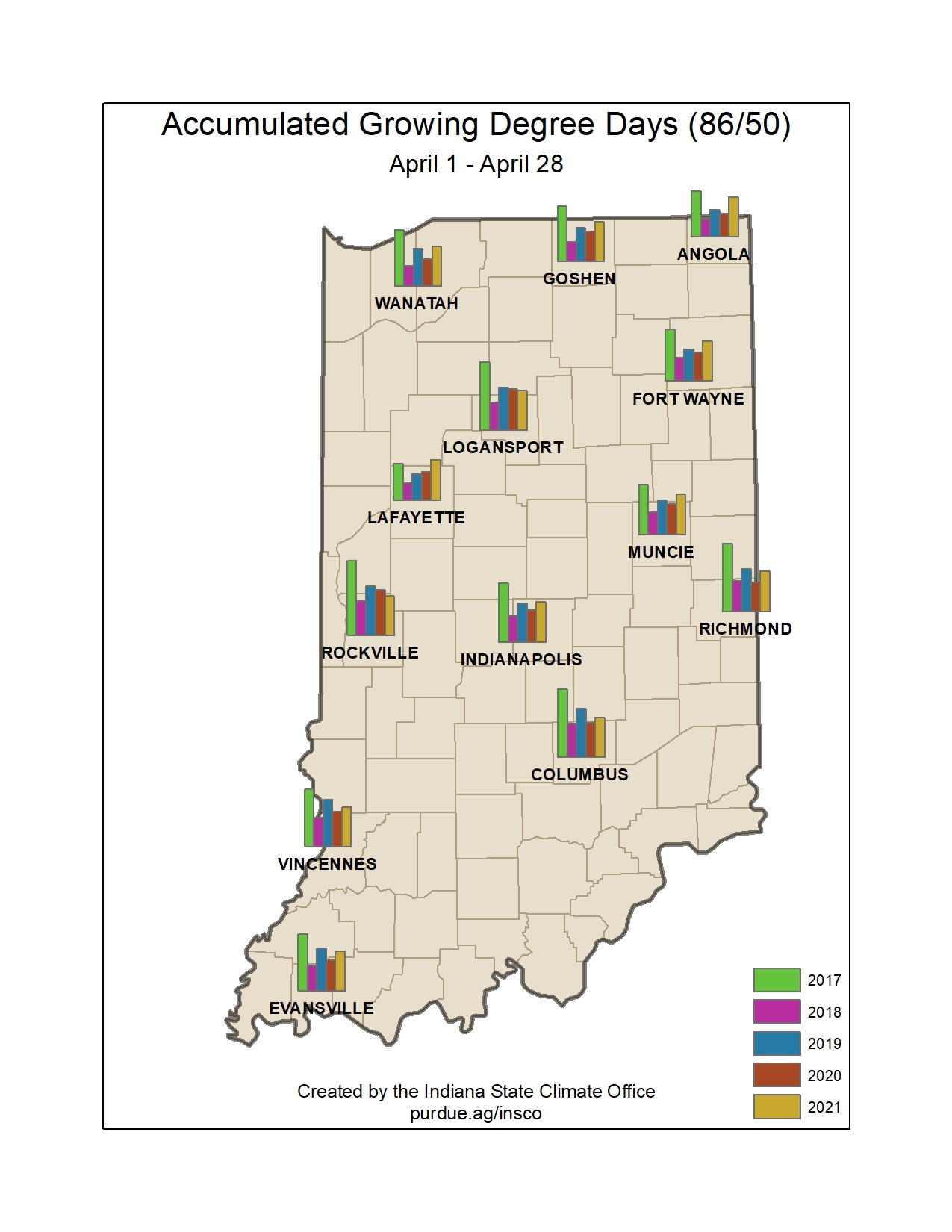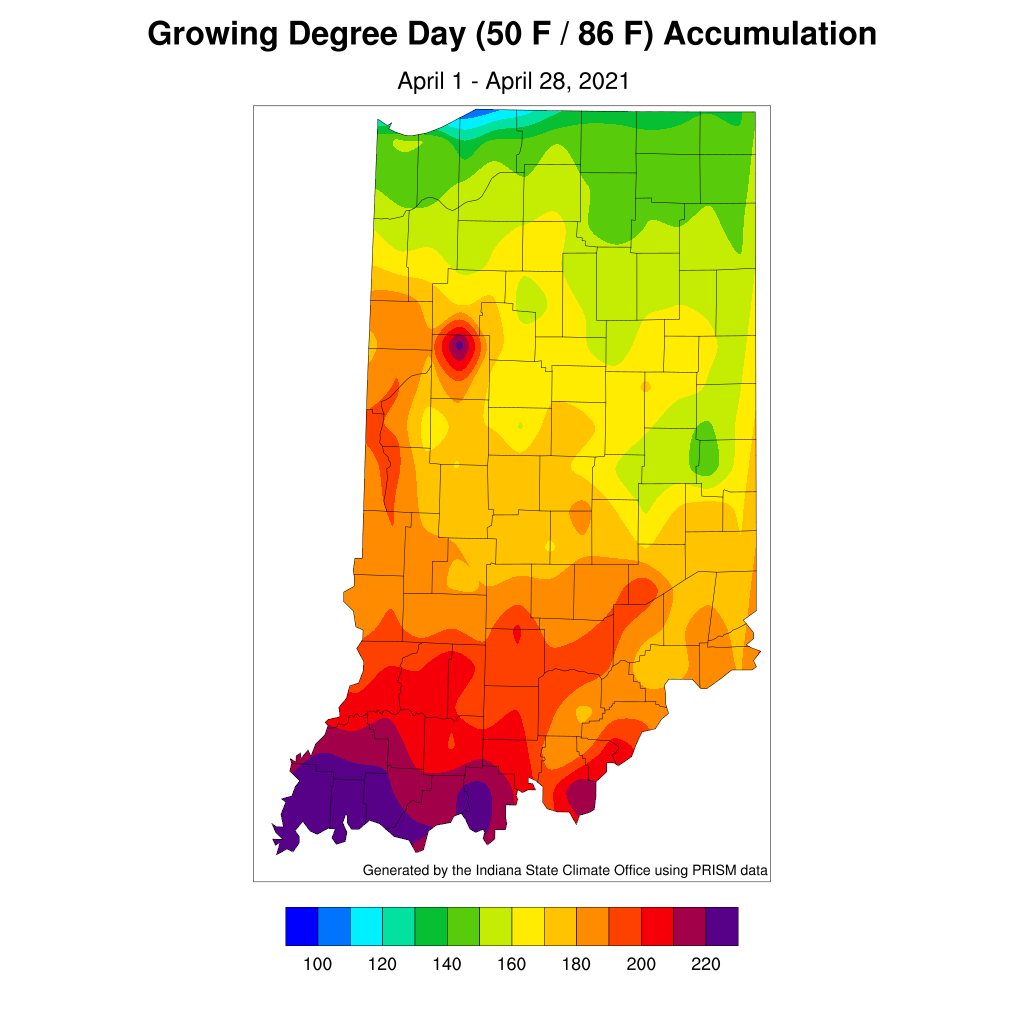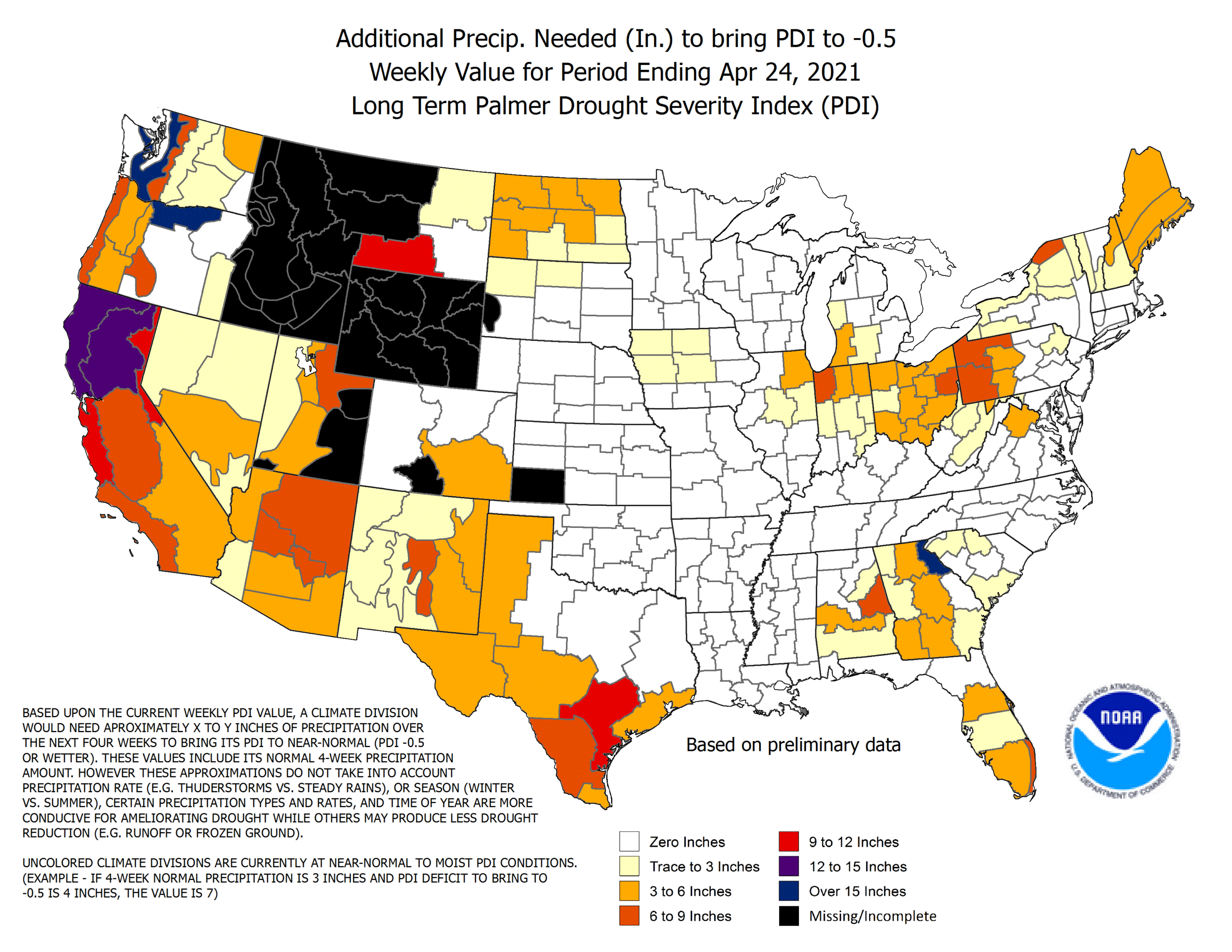Last week, the topic around Indiana was the snow event in April. This week started off with above normal temperatures followed by significant rainfall. This is what spring is like in the mid-latitudes. I have lived in Nevada, Illinois, Indiana, Ohio, New Hampshire, and Maryland. In all six of these states, the locals have enjoyed telling us something along the line of “if you don’t like the weather here in [fill in current location], just wait a few minutes”. They then like to go on by saying that’s how springtime is in [fill in current location]. Samuel Clemens (a.k.a. Mark Twain) is often credited with starting this now common expression. My personal experience is that the expression is not unique to any one state or town. If one lives in the middle latitudes of the U.S. (i.e., not Alaska, Hawaii, or those far southern states), then springtime is often a time of wide temperature swings and weather phenomena. It is nature’s way of transitioning between winter and summer and hitting some bumps along the way. Enjoy the ride. Wouldn’t it get boring to have sunny, warm, overly-consistent days every day of the year?
These weather swings keep climatologists and forecasters on our toes and at risk of looking wrong too often! With respect to accumulated growing degree days, things were progressing well and then quickly slowed down last week. In fact, southern Indiana was slightly behind average in their accumulations. However, the warm temperatures may have allowed those accumulations to catch up to normal (Figures 1 and 2). With warm temperatures comes increased evapotranspiration rates. If Indiana doesn’t see significant rainfall over the next several weeks, the topic of drought may become more than just small-talk fodder in the check-out lane. Climate outlooks from the federal Climate Prediction Center have been eluding to increased probabilities of above-normal precipitation since the end of the calendar year. However, the data shows that it never really happened. In fact, much of northern Indiana needs 3-6 inches of precipitation (or more!) to return conditions to normal (Figure 3). Combine that estimate with the increased rate of evapotranspiration and lower precipitation amounts over the past several weeks and there is suddenly concern starting to develop over whether our water supplies can be sustained. Even the recent rain this week, while around two inches in some places, may not be enough to replenish those deficits across the state. But, it’s a start!

Figure 2. Comparison of 2021 modified growing degree day accumulations from average for April 1-21 to the past four years.




